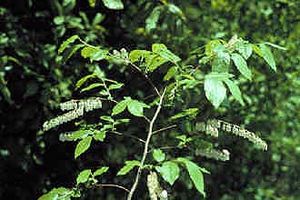Eubotrys racemosa facts for kids
Quick facts for kids Eubotrys racemosa |
|
|---|---|
 |
|
| Conservation status | |
| Scientific classification | |
| Genus: |
Eubotrys
|
| Species: |
racemosa
|
| Synonyms | |
|
|
Eubotrys racemosa is a cool flowering plant. It's also known by fun names like fetterbush, swamp doghobble, and swamp sweetbells. It belongs to the heath family, just like blueberries! You can find this plant growing along the Eastern United States coastal plain. Its home stretches all the way from Massachusetts down to Florida and over to Texas.
What Does the Fetterbush Look Like?
The fetterbush is a shrub that can grow quite tall. It can reach up to 4 meters (about 13 feet) high. Its leaves are thin and smooth. They are shaped like ovals or wide spear tips. The edges of the leaves have small teeth, like a saw.
These leaves are usually between 3 and 8 centimeters long. You might see both small and larger leaves on the same branch. The fetterbush is a deciduous plant. This means its leaves fall off in the autumn, just like many trees.
When it blooms, the fetterbush has pretty white flowers. They are shaped like tiny bells and grow in a row. Each flower is just under a centimeter long. After the flowers, the plant produces a small fruit called a capsule.
Where Does the Fetterbush Live?
This shrub loves to grow in coastal plain areas. You can often find it among pine trees like loblolly, slash, and shortleaf pines. It also grows near different kinds of oak trees.
The fetterbush lives in several types of habitats. These include:
- savanna (grassy areas with scattered trees)
- forests
- bogs (wet, spongy ground)
- pocosins (a type of swampy evergreen shrub bog)
The weather in these places is usually mild in winter. Summers are hot and humid. The fetterbush needs a lot of sunshine to grow well. It doesn't like shady spots and is usually found in full sunlight.
You might find the fetterbush growing alongside other plants. Some of its plant neighbors include:
- swamp blackgum
- loblolly bay
- sweetbay
- red maple
- titi
- southern white cedar
- hurrahbush
- sweet pepperbush
- southern bayberry
- laurelleaf greenbrier
It's important to know that the leaves of this plant are not safe for animals like cows or horses to eat. They are poisonous to livestock.


